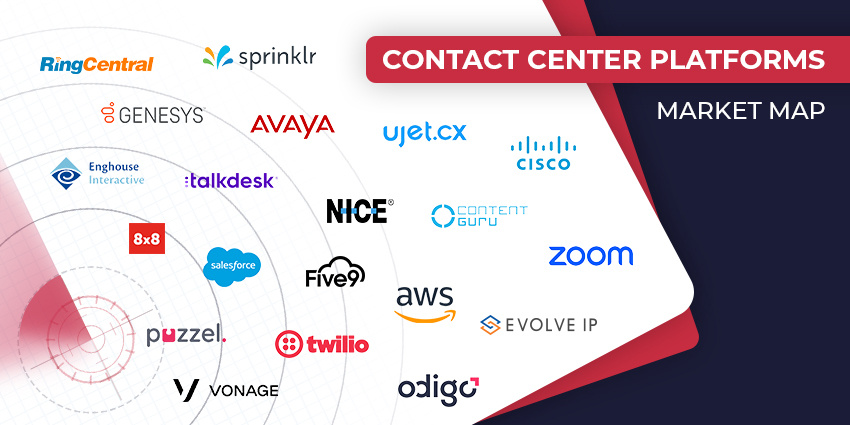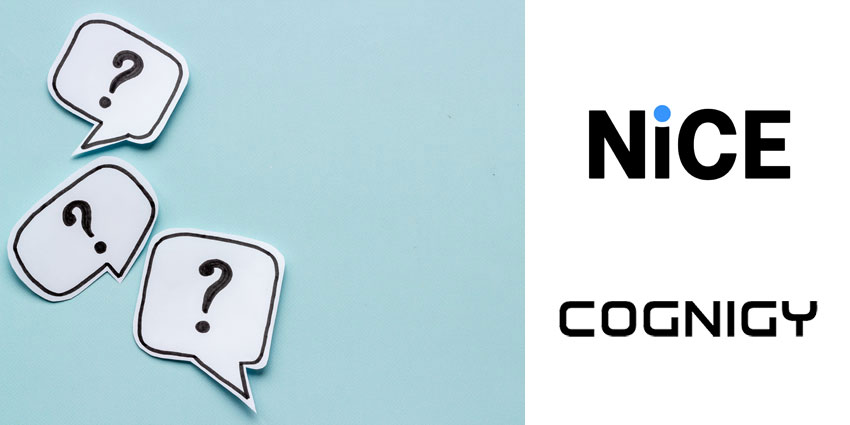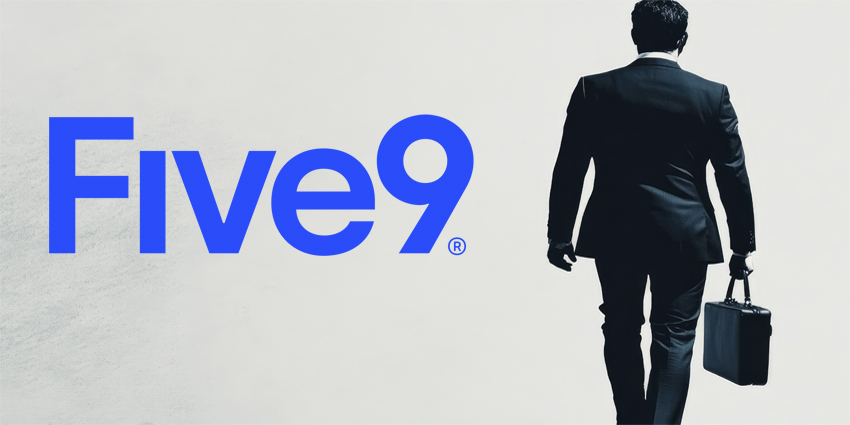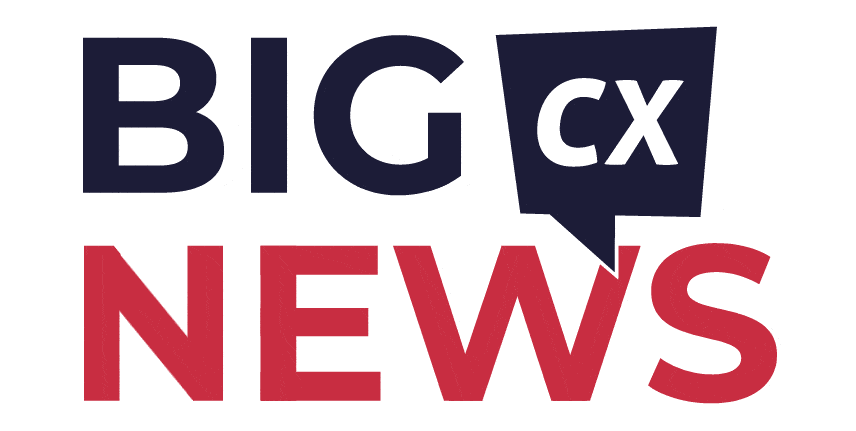In 2025, selecting the top contact center vendors goes beyond looking for basic voice and chat. Now, it’s all about picking tools perfect for delivering intelligent, secure, and deeply integrated customer experiences.
Enterprises need platforms that align employee and customer experience, enable omnichannel interactions, and offer access to the latest AI tools – all while still delivering enterprise-grade compliance and global scalability.
This year, the vendors plucked from the CX Today contact center marketplace may be familiar in name, but their roadmaps are evolving, with agentic AI, live analytics, seamless UC integration, and so much more. No more clunky legacy systems, now it’s the age unified contact center platforms powered by dynamic agents and data-driven decisions.
This guide dives into the best contact center vendors in 2025, assessing how each stacks up on innovation, enterprise utility, and real-world CX impact.
The Top Contact Center Vendors in 2025
The Top Contact Center Vendors for CX Leaders
Contact center vendors come in a lot of shapes and sizes right now, from cloud-focused leaders, to flexible innovators that build systems designed for specific use cases. These are just some of the companies making waves right now.
8×8
8×8 continues to stand out as a top contact center vendor with a focus on flexibility. It was one of the first companies to integrate UCaaS and CCaaS, and one of the earliest cloud (CCaaS) pioneers. 8×8’s contact center combines omnichannel communication with AI-powered features, like background noise suppression, real-time language interpretation, and even accent localization.
ML-powered global reach ensures 8×8’s tech delivers seamless experiences around the globe. Flexible API and integration options let businesses expand without compromise. Realizing visions can be extremely complex, and 8×8 has endured turnover in its C-suite. Yet, current CEO Sam Wilson has heightened the company’s focus on execution.
In doing so, 8×8 has aligned itself closely with the Microsoft Teams ecosystem. That has helped further its market positioning in recent years. Don’t expect this to change in 2025, as 8×8 continues to double down on its core competencies, bring its CPaaS capabilities further into the fold, and engage deeply with the midmarket.
AWS
Amazon Connect started as a journey to build a dedicated AWS CX solution. Now, it’s one of the most flexible and scalable contact center systems in the market. For companies in search of the top contact center vendors, AWS delivers an excellent choice between out-of-the-box simplicity, and high levels of customization.
Generative AI is woven into the platform via Amazon Q and advanced Contact Lens features. This helps agents with real-time responses and post-call categorization, streamlining supervision and training. The platform also embraced omnichannel depth: new support for voice, chat, SMS, video, and even WhatsApp ensures enterprise flexibility.
In addition, the fact that Amazon uses this solution across its 70,000-agent contact center allows for a strong testbed for any innovation to come from AWS. The refinement of capabilities before release builds trust in the vendor, an excellent trait in a competitive environment.
Avaya
Avaya is in rebuild mode. The company’s focus for 2025 is clear: support its existing enterprise customers and make the transition to modern contact center infrastructure as smooth as possible. That means less hype, more practicality.
At the centre of it all is the new Infinity platform. It pulls voice, chat, email, and messaging into one environment, built to run wherever it’s needed. That includes on-prem, in the cloud, or somewhere in between. For long-time Avaya customers, that kind of flexibility is valuable. Many aren’t ready to move everything to the cloud, and with Infinity, they don’t have to.
One standout feature is its no-code workflow builder. It’s a visual tool that lets business teams adjust customer journeys without pulling in developers. Routing, sentiment analysis, and post-call actions can all be handled in the same space. For organizations with deep investments in legacy systems, Infinity offers a way forward. It’s not a rip-and-replace story. It’s a steady evolution, aimed at helping large enterprises modernize at their own pace.
Cisco
Cisco remains a heavyweight in the top contact center vendors arena. Today, it’s combining enterprise-grade scale with aggressive AI innovation. Its Webex Contact Center now includes AI Agent Studio and Webex AI Agent, capable of handling 24/7 self-service via conversational intelligence, summarizing past conversations, and suggesting agent responses in real time.
The integration of Cisco’s CCaaS and CPaaS solutions will help the vendor in moving many of its large legacy base to the cloud. After all, it allows many of these larger customers to replicate custom integrations in the cloud, minimizing some of that migratory strife.
Cisco can link more seamlessly to point-of-sale, ERP, and in-house solutions, going beyond the typical CRM integrations. In addition to this, Cisco also aims to differentiate itself with its deep, adjacent security and networking portfolio, alongside its employee-serving technologies.
Content Guru
Among the top contact center vendors, Content Guru has developed a reputation for moving high-complexity, on-premise contact centers to the cloud, a testament to the robustness and resilience of its offering. It was recently Europe’s solo representative in Gartner’s CCaaS Magic Quadrant.
Content Guru’s storm platform stakes a strong claim among the best CCaaS systems for enterprise and public-sector users. With unmatched availability and scalability, storm handles up to 75,000 digital agents and 20,000 voice agents in major use cases.
The vendor is also one of a minority that has obtained a FedRAMP designation from the US Government and – at the time of writing – is the sole vendor to achieve its high impact “In Process” designation. Achieving the highest impact level certifies Content Guru’s ability to protect the most highly sensitive data within government cloud environments.
Enghouse Interactive
Taking a different approach to the likes of AWS, Enghouse has predominantly focused on growing its portfolio by acquiring other companies. Consequently, it has the advantage of offering a broad suite of contact center solutions.
Such an approach is appealing to enterprise customers who appreciate the safety of a large portfolio of new solutions to draw from, including everything from workforce engagement management (WEM) to unified communications (UC). Enghouse also stands out as one of the top contact center vendors for Conversational Intelligence and automated QA tools.
Its Contact Center for Enterprise solution supports seamless multichannel blending: voice, chat, digital, designed to route customers correctly the first time. Early 2025 enhancements include native integration with Microsoft Teams Phone via Azure Communication Services, available for TAP customers. This tight coupling enables agents to use Teams for queuing and call handling directly within Enghouse’s platform, offering a unified experience built for hybrid teams.
Evolve IP
Evolve IP embeds itself into the broader customer experience environment thanks to its broad integration strategy. Its adaptability to other solutions – across the UC and CRM space especially – will benefit enterprises already set up on other cloud-based systems.
Flexibility is a standout point. Evolve IP’s XTIUM Contact Suite enters 2025 with a renewed partner ecosystem focus, delivering cloud-native features like omnichannel routing, rapid deployment, and hybrid cloud flexibility. Their platform enables resellers to label and price solutions, with Evolve IP handling infrastructure and backend services.
As a full-service cloud partner, Evolve IP helps enterprises offload complexity while gaining a compliant, scalable foundation. The reseller-driven model offers flexible commercial paths, while feature updates in early 2025 enhanced agent tools and backend reliability.
Five9
As an early advocate for CCaaS, Five9 has developed a significant market presence and trust in its brand. Five9 stands out as a champion of “agentic CX,” introducing AI Agents that can reason, decide, and act autonomously. These agents are backed by “AI Trust & Governance” to ensure transparency, compliance, and auditability, crucial for enterprises in regulated sectors.
AI-powered routing, real-time analytics with Spotlight for AI Insights, and expanded global availability via Google Cloud Marketplace position Five9 among the top contact center vendors this year. A deep partnership with Microsoft Teams brings bi-directional presence integration to agents and UC users alike, while tight ServiceNow integration enables end-to-end AI-driven workflows.
Five9’s commitment to human-centered design, balancing autonomy with agent support, makes it a strong pick for enterprises aiming to elevate CX while maintaining control and clarity.
Genesys
Genesys has done a sterling job of migrating existing enterprises onto the cloud through playbooks and sharing best processes as a support service. The top line for this vendor in 2025 is: don’t expect anything radical unless it spins off and becomes an IPO.
That said, it’s still gaining steam as one of the top contact center vendors, thanks to a close working relationship with Salesforce and ServiceNow. These collaborations have allowed the vendor to position itself ahead of the curve in terms of CRM-CCaaS integrations. Genesys is also evolving its AI-driven orchestration and personalized engagement capabilities.
In early 2025, Genesys expanded its AI for Supervisors suite, enabling managers to cut quality evaluation time by up to 40%, multilingual review time by 25%, and administrative overhead by nearly 40%. Organizations are also adopting Genesys for its agentic AI – a move to autonomous digital workers that handle workflows end-to-end, not just script-following bots.
Google is quietly stepping up its game in the top contact center vendors space. At Cloud Next 2025, it unveiled tools like Agent Space and Agent2Agent frameworks, making multi-agent, multi-model AI orchestration a reality. The updated Contact Center AI platform now includes enhanced Salesforce ICU support, improving locale and date/time formatting across global deployments too.
Google also continues to refine its Customer Engagement Suite. It’s adding human-like voices, CRM connectors, and emotion-sensing capabilities, showing a growing maturity in enterprise-grade CCaaS. Verizon recently integrated Gemini-powered chat into its support flows, demonstrating real-world demand.
Although it hasn’t yet dominated the Gartner leaderboards, recent moves signal Google’s push to be a strong player. For global businesses seeking flexible, developer-friendly, AI-driven contact center capabilities, Google’s CCAI platform is worth watching.
Microsoft
Microsoft finally made its big CCaaS move last year with the launch of the Dynamics 365 Contact Center, its “Copilot-first” platform. The offering is attractive to current users of Microsoft’s CRM solution: Dynamics 365 Customer Service, with Copilot helping to pull the platforms together and unify the service environment.
Companies already get AI-driven routing, unified case management, real-time transcription, live translation, and embedded Teams collaboration for seamless agent and knowledge workflows. Yet, Microsoft undoubtedly wishes to reach a bigger audience in 2025, and bringing agentic AI into the space is its most compelling tactic.
It’s already begun adding native AI agents to the platform, and giving companies opportunities to embed and build their own AI solutions. Plus with new connection options for third-party vendors looking to leverage Microsoft Teams Phone, Microsoft is continuing to bet on versatility.
NICE
NICE is pushing hard to maintain its reputation among the top contact center vendors with its reimagined CXone Mpower platform. Neck-and-neck with Genesys, NICE leads the CCaaS market in terms of revenues. Key to this is the vendor’s early move to embrace CCaaS, its aggressive use of AI, and numerous success stories that help prove its ROI.
Couple this with its gold-standard WEM, and it’s no surprise NICE is at the forefront of various industry research reports, including the Gartner Magic Quadrant and Forrester Wave. Additionally, NICE has lots of different adjacent solutions, such as robotic process automation (RPA), compliance, and UCaaS tools, which are adjacent to the contact center market.
This means that they can replace a lot of different solutions when they enter a contact center and converge the customer service environment. Plus at Interactions 2025, NICE showcased how “agentic AI” runs the full spectrum, from intent to resolution, automating entire workflows through integrated audio, digital, and knowledge layers, earning new attention from enterprises.
Odigo
Odigo may fly under the radar compared to hyperscalers, but it’s firmly in the mix as one of the top contact center vendors for European enterprises and public sector clients. The company popped onto the CCaaS scene by spinning out of Capgemini.
Having kept close ties, Odigo can leverage Capgemini’s various subsets of CX expertise to offer enterprises deep consulting services that may aid their transformations. Its Extended Contact Center model allows flexible licensing for occasional users, back‑office, branch staff, or advisors, supporting seasonal use at lower rates.
Meanwhile, its AI Orchestrator engine, voice+digital channel support, open APIs, and SightCall integration provide rich, scalable capabilities, designed for compliance-heavy industries.
Puzzel
Like Odigo, Puzzel is an established Europe-first contact center vendor that strives to differentiate by being a close transformation partner. Its optimization program ensures that it’s not one of those providers that implement a solution and then walk away. That continuous support is massive.
Additionally, Puzzel is expanding beyond the core facets of CCaaS with various other solutions like sales intelligence systems for insights into revenue opportunities and digital engagement. It also introduced a callback display feature in June 2025, which sends customers an SMS link allowing them to view their queue status live, and cancel if needed, reducing abandonment.
Puzzel’s focus on AI-powered agent assist, intelligent routing, and comprehensive performance metrics also means agents spend less time toggling systems and more on valuable customer engagement
RingCentral
Since the release of the Ring CX contact center solution, RingCentral has leaned further into its vision of becoming the communication layer across an enterprise, including contact centers. By combining the CCaaS solution on one platform with its UCaaS and conversational intelligence offerings, it bridges the contact center and the broader business.
As one of the top contact center vendors this year, RingCentral also invests heavily in AI. Their AI‑led RingCentral AI Receptionist has shown strong ROI, cutting inbound call handling time by half and helping agents focus more on revenue-generating interactions.
The broader RingCX AI enhancements offer deeper analytics, AHT reduction, and better onboarding for new agents, all promoting efficiency and satisfaction. RingCentral Rooms also now features high-fidelity multi-stream audio and advanced camera presets, great for video CX.
Salesforce
The Salesforce Contact Center is little more than a routing engine layered over its Service Cloud CRM application. So, why does it feature on this top contact center vendors list? Because Service Cloud is an incredibly powerful solution, especially when placed within the broader Salesforce ecosystem.
The Spring ’25 update pushed Agentforce Service into GA, bringing AI-supported real-time supervision, case routing, and field-service automation. The Summer ’25 release enhanced that suite further, enabling AI agents to surface visuals, media, and rich context during interactions across Lightning, mobile, and Slack apps
Companion updates to Service Cloud Voice ensure fully featured call center UIs can be updated directly via Salesforce’s deployment tools. Most notably, the Salesforce-Amazon Connect combined offering hit general availability in March 2025, merging Amazon’s voice and digital interactions directly within Service Cloud.
Sprinklr
With its legacy of being the social media provider for many enterprises, Sprinklr’s aggressive move into the contact center and conversational AI space has garnered significant attention. From digital twin agents that replicate human agents to advanced VoC features, it’s not a vendor that avoids nudging the innovation needle, either.
Looking to build on the momentum created from securing deals with companies like BT and Deutsche Telecom, this vendor will likely see further developments in 2025. As it does so, expect Sprinklr to bolster its focus on execution, especially after naming Rory Read as its new CEO, someone with a deep understanding of the contact center space.
Already, Sprinklr is making progress as one of the top contact center vendors, with more generative AI capabilities, and flexible automation. It was even named a top performer by Gartner in the last Magic Quadrant.
Talkdesk
Talkdesk is very big on sector-specific solutions, packaging individual clouds with oven-ready workflows and AI tuned specifically for that industry. The vendor is also focused on supporting highly customized CX environments, with a Talkdesk Embed module allowing businesses to place their core functionalities within a tailored CX environment.
In 2025, new capabilities like AI Launchpad’s redaction controls and generative AI guardrails add privacy safeguards, crucial for regulated industries Talkdesk also garnered industry acclaim: receiving the 2025 AI Agent Product of the Year award and earning recognition for its CX performance.
With strong enterprise integrations (CRM, analytics, workforce management), high availability, and AI-powered agent workflows, Talkdesk delivers a turnkey, intelligent top contact center platform for enterprises that need robust tools and fast outcomes.
Twilio
Similar to AWS, Twilio first released its CCaaS platform – Flex – as a set of building blocks. It allows contact centers to develop unique operations for companies’ specific needs. However, with the company somewhat sidetracked by its massive Segment acquisition, Flex hasn’t enjoyed the same growth as Amazon Connect.
Thankfully, the company has pivoted recently and now again appears more intent on making its mark across the contact center space. Positioned firmly as one of the best contact center platforms, Flex offers a low-code toolkit for embedding omnichannel journeys: voice, chat, SMS, email, and messaging apps, into custom workflows.
2025 updates add real-time queue metrics and alerts in supervisors’ dashboards, enabling immediate intervention when service levels waver Closer integration with Segment CDP and generative AI previews signal Twilio’s trajectory toward data-rich, intelligent engagements.
UJET
UJET has taken a unique approach to contact centers. Its CCaaS solution is smartphone-oriented, as it believes contacting customer service should feel no different from messaging a friend or family member on WhatsApp or calling them.
Despite having developed this architecture years ago, the approach remains unique within the contact center space. UJET also allows users to orchestrate the ideal experience for each significant reason customers reach out to the business, blending various types of AI.
Teams can experiment with real-time agent assistance, forecasting, sentiment analysis, and virtual agents for frictionless in-app support. Plus, the has a close relationship with Google, and Microsoft, equipping it with early access to the latest AI models and accelerating its innovation curve.
Vonage
Vonage is another vendor merging CPaaS and CCaaS. In its case, the vendor can leverage the vast networks and 5G capability of Ericsson, its parent company. As such, Vonage differentiates in its mobility. Like many of the top contact center vendors, Vonage has a strong partnership ecosystem.
Its close ties to Salesforce are notable, yet – more differentiative – is its co-innovation relationship with SAP, another large enterprise CRM provider. In 2025, the contact center offering introduced various AI capabilities, virtual assistants for self-service, dynamic IVR routing, real-time speech analytics, and knowledge-base recommendations.
Other updates introduced granular control over email journey types and agent interaction with enriched customer context, streamlining workflows and broadening channel coverage. Vonage’s microservices-backed architecture and compliance support (PCI, GDPR, etc.) suit modern CX requirements too.
Zoom
Zoom is a relative newcomer to the contact center sphere, yet has fast established a deep install base of 1,250+ customers. Much of that business stems from customers within its broader base and reputation for delivering easy-to-use software. However, it also comes as Zoom has developed a rapid innovation cycle.
Its Contact Center offering leverages native integration with Zoom Meetings, Phone, and Team Chat to deliver unified agent experiences. Recent upgrades include real-time sentiment dashboards, AI-powered wrap-up suggestions, and enhanced video-first routing.
Zoom is also doubling down on top contact center vendor workflows for frontline-heavy industries. Advanced callback features and mobile engagement tools support agents on the go. Integrated knowledge bases and searchable transcripts improve first-contact resolution.
Choosing the Top Contact Center Vendors in 2025
Comparing contact center platforms used to mean looking at channels. Voice, chat, email. That’s changed. Now it’s about orchestration. Can the platform move between those channels without losing context? Can it automate handoffs, assist agents, and deliver something useful to supervisors at the same time?
In 2025, most platforms offer some version of AI, automation, and omnichannel support. But how they use these features, and how well the platform fits with business goals is what matters. The same goes for integrations. Everyone says they have them. Not all of them work the way you need.
For companies still struggling, CX Today offers resources designed for clarity:
- Dive deeper into the data: Download our latest CCaaS research reports to uncover market trends, vendor comparisons, and real-world adoption stats.
- Join our CX Community: Connect with CX leaders, decision-makers, and collaboration experts to share strategies and success stories.
- Discover live demos & events: Engage with vendors face-to-face at upcoming events, experience live demos, and network with peers who’ve walked the path.
- Master the procurement process: Use our Ultimate CX Buyer’s Guide to navigate every stage, from requirements gathering to implementation planning.
The future of customer engagement demands platforms that are intelligent, integrated, and outcomes-driven. With CX Today, enterprises can make sure their CX strategy is ready for what’s next.







